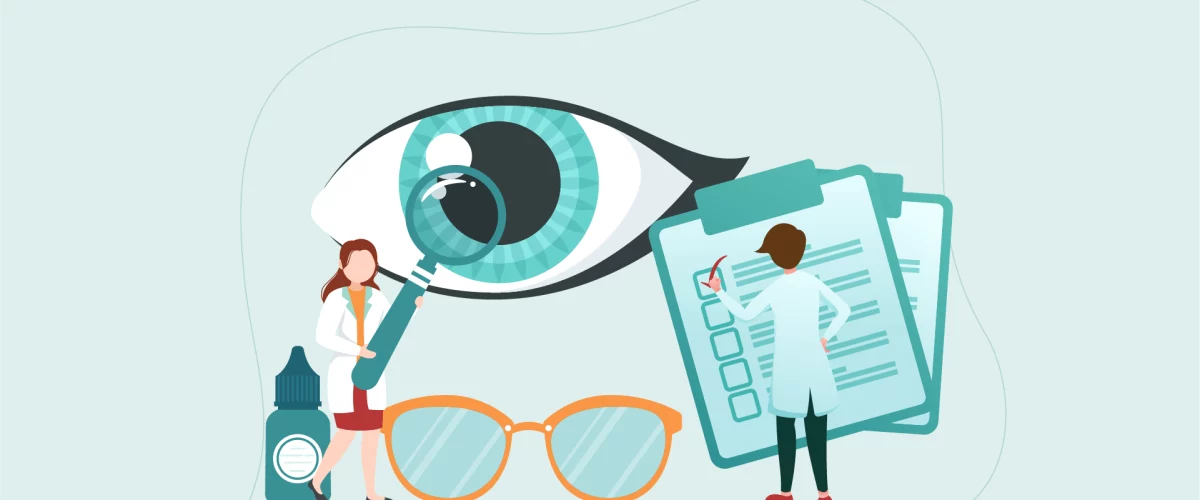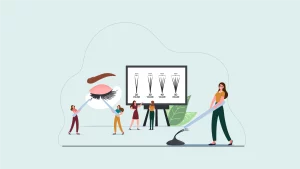Do you know the right practices to follow regularly if you want to limit dry eye? In this article, we offer tips on how to improve your everyday life.
What is dry eye?
Dry eye, also known as dry eye syndrome, is a highly prevalent condition—one of the most common reasons for consulting an ophthalmologist—and comes in several forms.
First, we have the aqueous-deficient form, which due to a drop in tear production.
It is important to note that tears are essential to keeping the ocular surface hydrated, by providing moisture, lubricating the surface of the eye and helping to prevent infections. They comprise not only an aqueous layer (water) but also a lipid layer (oil) and a mucin layer (adhesive).
Then there is the evaporative form, linked to meibomian gland dysfunction (MGD). These glands produce the lipid layer of tears, which is essential to preventing them from evaporating too quickly. When these glands malfunction, the quality of the lipid layer changes, which can aggravate dry eye and discomfort.
Finally, there is the mixed form of dry eye, which is characterised by a combination of the other two forms, i.e. a reduction in tear production and poor quality lipid secretion from the meibomian glands.
What are the symptoms?
Dry eye can involve several symptoms, including a burning or stinging sensation, red or irritated eyes, a gritty feeling in the eyes, blurred vision, eye fatigue and increased sensitivity to light. These symptoms vary in intensity from person to person and may be exacerbated in dry or dusty environments.
It is important to recognize these signs so that dry eye can be managed effectively, in order to prevent long-term complications and maintain optimal visual comfort, without impacting quality of life.
Five tips to reduce dry eye
Dry eyes can have a constant negative impact on everyday life, affecting our visual comfort and even our productivity. To help alleviate this problem, adopting a few simple practices can make all the difference. Incorporate these five habits into your daily routine to limit dry eye:
- Maintain good eyelid hygiene. This helps to prevent the meibomian glands from becoming blocked. There are several steps involved in effective eyelid hygiene: heating, massaging, blinking and cleaning. For more information, watch our tutorial by clicking here.
- Take regular breaks when using screens. If you spend long hours in front of a computer, smartphone or TV screen, take regular breaks to rest your eyes. Use the 20-20-20 rule. Every 20 minutes, look at something 20 feet (about 6 metres) away for at least 20 seconds.
- Blink regularly. When you blink, you spread the tear film evenly across the eyes, helping to keep them hydrated. If you work at a computer screen or in an environment where you are likely to blink less, do regular blinking exercises to avoid the feeling of dry eye (to watch our tutorial, click here).
- Avoid dry environments. Dry climates, heating systems and air conditioning can aggravate dry eye. Use a humidifier in your home or office to maintain a comfortable humidity level.
- Adopt a healthy lifestyle. Omega-3 fatty acids found in oily fish, nuts and seeds can help to reduce inflammation and promote healthy tear production. Incorporate omega-3-rich foods into your diet to help improve your eye health. It is also important to keep hydrated. Dehydration can contribute to dry eye. Make sure you drink enough water throughout the day to maintain adequate hydration (between 1.5 and 2 litres of water per day).
By incorporating these five simple practices into your daily routine, you can help to limit dry eye and keep your eyes in good health.
>> For more tips on dry eye and how to prevent it, click here.
Make sure you consult your ophthalmologist if you suffer from dry eye, for advice and treatment tailored to your specific situation.





